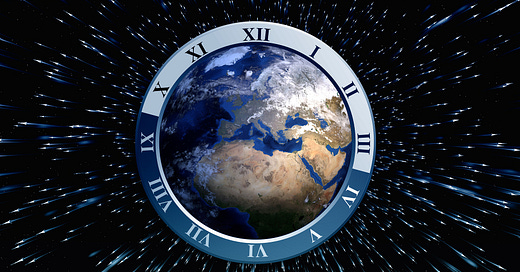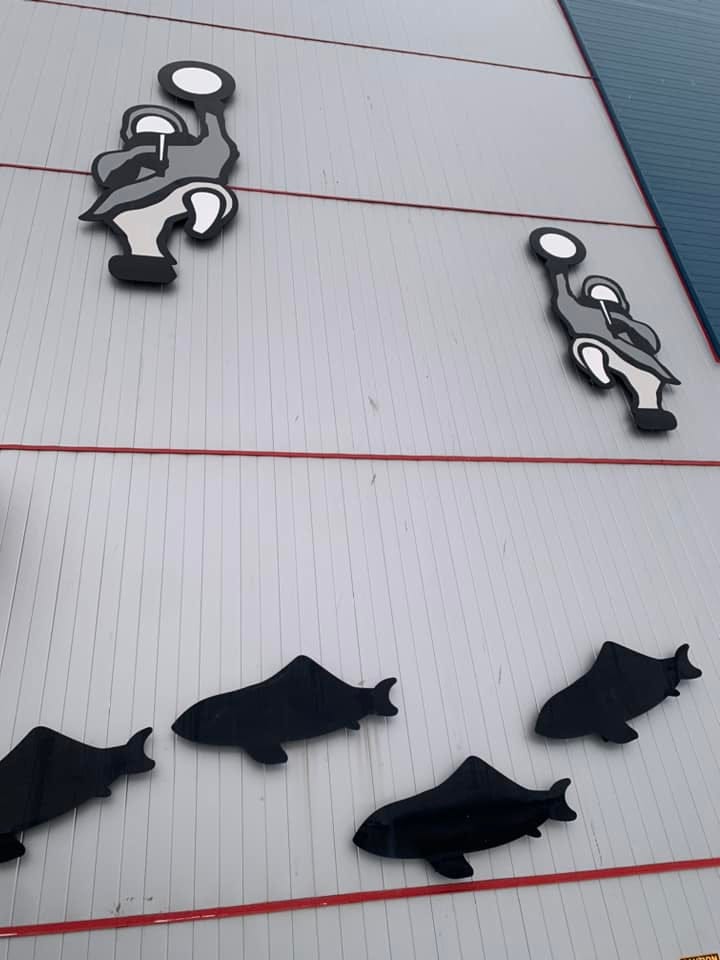Daylight Saving Time, the Earth and Faith
Hi friends, I don’t know about you, but I was exhausted all day on Monday following the time change. I rarely feel the effects of the biannual time change on Sunday; it is always on the Monday, when I have to get up at my usual time for parenting and work responsibilities. Indeed, I’m still feeling it today, as the week progresses.
This is the time of year when the news and social media about with articles about the troublesome nature of Daylight Saving Time (DST). Now and in the fall, we are reminded that the artificial changing of the time in the spring to gain us an extra hour of sunlight during standard working hours, and then returning back to standard time in the fall, is bad for us. It is bad for both our physical and mental health. Called “social jet lag,” the effects of the time change, both in the spring and in the fall, include physical and mental fatigue, which in turn leads to a higher rate of car and workplace accidents. In the short term, the biannual time changes lead to higher rates of heart attacks, strokes, injuries, mental health and cognitive issues, and digestive and immune-related diseases. Long term, the time changes have been linked to depression, slower rates of metabolism, weight gain, and cluster headaches.1 It is no wonder that every six months, we hear the calls for going the way of Saskatchewan, Yukon, Arizona, and Japan, which do not follow DST!
Why are there such serious health repercussions to having DST? It is because it goes counter to the internal clock that exists within our bodies (our body clock) in careful calibration with the sun (the solar clock). Our bodies operate on a circadian rhythm, which is described by the National Institute of General Medical Sciences this way:
“Circadian rhythms are physical, mental, and behavioral changes that follow a 24-hour cycle. These natural processes respond primarily to light and dark and affect most living things, including animals, plants, and microbes. …One example of a light-related circadian rhythm is sleeping at night and being awake during the day.”
Our bodies, then, are meant to follow the path of light during the day. With the shortening of light in the fall and winter months, our bodies make biochemical adjustments, which is why we often need more sleep in the winter.
There are, of course, many factors in contemporary life that can interrupt our circadian rhythms, including insomnia, the extension of artificial light well into the night, and working shift work (on a 24 hour schedule). These factors have also been studied for their negative health implications. But why am I talking about this in a newsletter on faith and climate action?
It is because DST, called the “social clock” and which is based upon industrial demands for more light in order to have people work longer, interrupts the rhythms and systems that have been carefully developed and maintained, through evolution, between human beings and the seasons on the Earth. DST interrupts the careful, interconnected relationship that we humans have within the Earth community, with the sun and the moon, with day and with night. For eons, humans have followed the pattern of the sun (noon being its highest point in the sky) for work, leisure, and rest. This has proven to be the best for human health, and for creating societies that move most effectively in rhythm with the world around them.
Our body clocks, in line with the solar clock, have been proven, through the process of evolution, and even through the development of the Milky Way galaxy, with its precise distance of the sun from the Earth to allow for life to exist, to be the best for human existence and flourishing within the Earth community. The social clock of DST, designed by industry to create more working hours, disrupts the exquisite precision with which human beings live in relationship within the Earth community.
Depending upon your perspective and personal experience of DST, this may not seem like a significant issue. Yet, it is one example, one more symptom, of a worldview that has divorced itself from the natural world, seeing ourselves as separate from, and somehow immune to, the impacts of the Earth upon our bodies, our societies, and how we live in community.
Time in Scripture
In my reflection upon the issue of DST and the way that it interrupts the evolutionary precision of our body clocks in light with the solar clock, I decided to explore the use of time in the Hebrew and Christian scriptures. There are many ways in which the question of time can be explored biblically and theologically. One is to note that there are two kinds of time in scripture; there is chronos time, which is used to denote periods of time such as we normally understand them. There is also kairos time, which is considered God’s time. It is the breaking in of God into our world, and it describes those moments when time seems to stop, or take on a different dimension. When we talk about the kingdom of God coming, of being ‘already but not yet’, we are talking about kairos time, not chronos time.
It may seem, then, that kairos time is superior to chronos time, and so why should ordinary time matter? Ordinary time matters because it is the time in which we experience our lives, both in the mundane and the ordinary, and the spectacular and the holy. While kairos time are those moments when we experience God, those experiences of God still happen in chronos time.
There are many passage in scripture in which we could explore this, such as the interminable 40 years in which God’s people were exiled in the wilderness. I decided, since we are in the season of Lent, to look at the Gospel readings of Jesus’ crucifixion, death and burial. How is time described then?
While all four Gospels tell the story of what happens to Jesus at the end of his earthly ministry, it is in the Gospels of Matthew, Mark and Luke that time is delineated by the hours on the clock and the marking of the sun. Mark gives the most complete narrative. He tells us that it was at nine o’clock in the morning on Friday that Jesus was crucified. It was at noon when “darkness came over the whole land until three in the afternoon” (Mark 15:33, NRSV). He died shortly after 3 pm. He was taken down from the cross and buried that evening, but before the Jewish sabbath would begin at sundown. He lay buried until the third day, at dawn on Sunday, when the women went with spices to prepare the body and found that Jesus had risen from the dead.
Note the specificity of time in this narrative: Jesus was crucified at 9 am, a time when everyone is up and active. At noon, the time when the sun is highest in the sky, darkness actually covers the land. There is a powerful image here, the greatest contrast that can happen. Since the sky is normally its brightest then, according to the solar clock, the breaking in of the darkness is particularly powerful. At 3 pm, according to all three Gospel writers, Jesus cries out, then dies. They did not wear watches, but time, at that moment, became very evident to those witnessing the event. And then, following the Jewish observance of the Sabbath, which was regulated by the solar clock, he was buried, and later the women approached the tomb to discover that Jesus had been resurrected.
Imagine the meaning that would be lost, were DST to have existed then. The profundity of this story would be muted; the ways in which time, chronos time, matters in the telling of the story, would be altered. Damaged. The story would have been changed in such a way that disrupts both the rhythms of the Earth community within the human body and community, but also disrupts the most sacred story for Christians.
This is just one example of how we can look at the importance of reorienting ourselves, as human beings, within the Earth community. It is questionable that we ever really ‘needed’ DST; I would argue that we didn’t. And, as Lloyd Alter points out in his newsletter,
“But now, our TV streams on demand, many people are working from home mostly on their own schedules, and online banking and shopping have made opening and closing times meaningless. It’s a modern world where we run on Internet Time and join meetings all over the world, yet our bodies still want to tune into the sun.”
It’s time, then, to get rid of DST, for several important reasons. We need to in order to improve our health. As people of faith, reorienting our body clocks to the solar clock, instead of the social clock, can help us better appreciate and find meaning in the stories of our faith. And, as people of faith seeking to respond to the climate crisis, we need to return to the ways in which our bodies and lives have been so carefully, exquisitely calibrated with the rising and setting of the sun. After all, it is God, the God of all creation, who set all of this into motion 13.8 billion years ago, and who has been working through evolution to create a world perfectly created to support life and its flourishing.
In the beginning when God created the heavens and the earth, the earth was a formless void and darkness covered the face of the deep, while a wind from God swept over the face of the waters. Then God said, ‘Let there be light’; and there was light. And God saw that the light was good; and God separated the light from the darkness. God called the light Day, and the darkness he called Night. And there was evening and there was morning, the first day. (Genesis 1:1-5, NRSV)
Discipleship in Action
I am considering changing the name of this segment to “Call to Action”. What do you think? I would appreciate your feedback, either in the comments below or via email to me. Thank you!
The news about the ecological crisis, especially the climate crisis, can be overwhelming and discouraging; it is easy to feel that there is little we can do. This isn’t true! There is so much that we can do, concrete actions that we can take now, in response to God’s call upon us as people of faith. Here is one idea.
Get Involved in Your Neighbourhood
The dream and goal of climate and ecological action is, among other things, to create livable, thriving communities in which people are free to live in harmony with their neighbours and the Earth. While the work of climate action feels large and overwhelming, we can work to create the neighbourhoods that we want today. Volunteering, following your municipal politicians, and shopping locally area all ways that you can work toward a better community for all. You can volunteer individually or join a community association. You can follow, support and challenge your locally elected officials, and become aware of and interested in municipal affairs. While this can appear to be less exciting than the issues that are presented in the news at higher levels, it is at the municipal level that policy changes most immediately affect us – and where we can be most effective at working for change. As well, shopping locally helps to build up the community we want, and fights against the big box stores (and online big business) that are such a threat to viable communities. What is a way that you are already involved, or can consider getting involved, in your neighbourhood? This can be discipleship in action.
Earth Community in Pictures
Subscriber Kaitlin Gieger-Bardswich was recently in Iqaluit, Nunavut, and shared these pictures on Facebook. She has graciously given me permission to share them with you!
Earth community consists of people, animals and place in relationship with each other.
“Daylight Saving Time and Your Health,” February 2021. https://www.nm.org/healthbeat/healthy-tips/daylight-savings-time-your-health#:~:text=A%20Broader%20Health%20Hazard,feel%20like%20prolonged%20jet%20lag. Accessed March 13, 2023.










